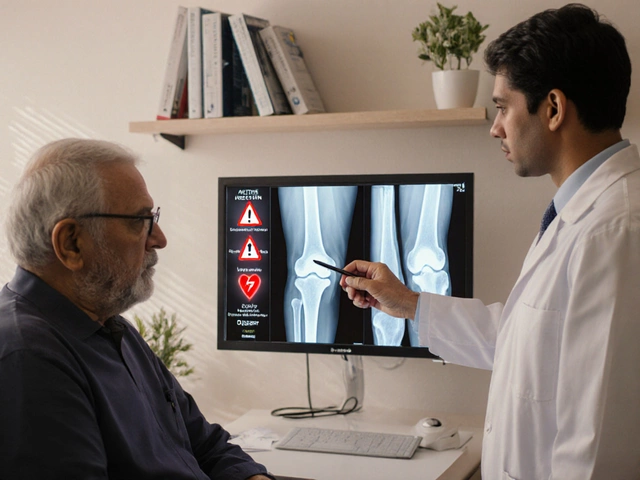Glucose Control: Simple Steps to Keep Your Blood Sugar Safe
If your blood sugar swings like a roller‑coaster, you’re not alone. Too many Indian meds hide sugar‑shifting ingredients, and a few everyday habits can make things worse. The good news? You can tighten control with a few everyday moves that cost nothing but a little attention.
Why Glucose Levels Matter
High glucose isn’t just a number on a lab report – it raises the risk of kidney damage, eye problems, and heart disease. Even short spikes push your body into stress mode, releasing hormones that keep fat cells angry and insulin less effective. That’s why tracking your levels after meals, medicine, or a stressful day can tell you if something’s off before it turns serious.
In India, many over‑the‑counter painkillers, antihistamines, and even some herbal blends contain hidden sugar or chemicals that raise blood sugar. Knowing which products to avoid saves you from accidental spikes that feel like a surprise.
Practical Ways to Manage Glucose
1. Read labels like a detective. Look for hidden sugars (sucrose, dextrose, maltose) and artificial sweeteners that may still affect insulin. If a pill lists “lactose” as a filler, count it as extra carbs.
2. Time your meals. A balanced plate – half veggies, a quarter protein, a quarter whole grains – steadies glucose for up to four hours. Add a splash of lemon or a pinch of cinnamon; both have mild sugar‑lowering effects.
3. Stay active, even in short bursts. A 10‑minute walk after eating can drop post‑meal spikes by up to 15 %. If you can’t step outside, march in place while watching TV.
4. Hydrate with the right drinks. Water is king. Unsweetened herbal teas like fenugreek or hibiscus have been shown to improve insulin sensitivity without adding calories.
5. Check your meds. Talk to your pharmacist about alternatives if you’re on corticosteroids, certain diuretics, or older antipsychotics – many have newer versions with less impact on glucose.
6. Use simple tech. A fingertip glucometer or a Bluetooth‑linked app can alert you when levels creep high, letting you adjust food or activity right away.
7. Mind stress. Stress hormones can push glucose up even if you haven’t eaten. Quick breathing exercises, a few minutes of meditation, or an Ayurvedic abhyanga (oil massage) can calm the nervous system and keep sugar steady.
8. Know your family history. If diabetes runs in the family, start monitoring earlier. Early detection gives you a chance to prevent full‑blown disease.
9. Ask about herbal supplements. Some “natural” products claim to lower sugar but may interact with prescription meds. Always check with a qualified health professional before adding them.
10. Keep a log. Jot down what you ate, meds taken, and how you felt. Patterns emerge quickly, and you’ll spot problematic foods or drugs without guesswork.
Putting these habits together creates a safety net around your glucose levels. Over time, you’ll notice fewer surprise spikes, steadier energy, and less worry about hidden toxic ingredients in everyday medicine.
Remember, controlling glucose isn’t about drastic diets or expensive gadgets. It’s about making small, consistent choices that add up. Start with one or two tips from this list, watch the results, and build from there. Your blood sugar—and your whole body—will thank you.

New Pill for Type 2 Diabetes 2024: What You Need to Know
Heard about the new pill for type 2 diabetes that hit the market in 2024? This article explains what the drug is, how it works, and how it’s different from previous treatments. You’ll get real info on side effects, practical tips for daily life, and honest talk about who might benefit most. Find out if this new option could fit into your diabetes management plan.




